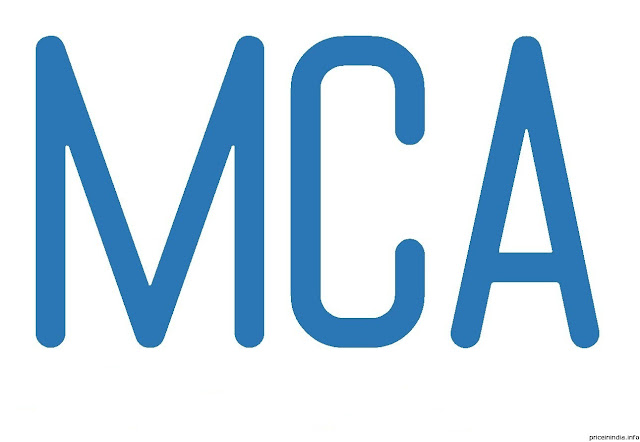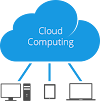All India MCA Common Entrance Test (AIMCET)
 |
| All India MCA Common Entrance Test |
All India MCA Common Entrance Test: Master of Computer Applications (MCA) is a professional post-graduate programme.Here is the full Syllabus for mca entrance exam. MCA is a master degree in Computer applications. It is a 3-year post-graduate course.
Each question shall carry 4 marks for the correct answer. For every incorrect answer, one mark shall be deducted. If a question has not been attempted no credit will be given.
Computer Awareness - 40 Questions
Analytical ability & Logical Reasoning - 40 Questions
General Awareness - 20 Questions
Total - 200 Questions
Algebra: Fundamental operations in Algebra, Expansion, factorization, simultaneous linear/quadratic equations, indices, logarithms, arithmetic, geometric and harmonic progressions, binomial theorem, permutations and combinations, surds, determinants, matrices and application to the solution of simultaneous linear equations.
Co-ordinate Geometry: Rectangular Cartesian co-ordinates, equations of a line, midpoint, intersections etc., equations of a circle, distance formulae, the pair of straight lines, parabola, ellipse and hyperbola, simple geometric transformations such as translation, rotation, scaling.
Calculus: Limit of functions, continuous functions, differentiation of functions(s), Tangents and normal, simple examples of maxima and minima, Integration of function by parts, by substitution and by partial fraction, definite integral application to volumes and surfaces of frustums of a sphere, cone, cylinder, Taylor Series.
Differential Equations: Differential equations of first order and their solutions, linear differential equations with constant coefficients, homogenous linear differential equations.
Vector: Position vector, additions and subtraction of vectors, scalar and vector products and their applications to simple geometrical problems and mechanics.
Trigonometry: Simple identities, trigonometric equations, properties of triangles, solution of triangles, height and distance, inverse function
Probability and Statistics: Basic concepts of probability theory, Averages, Dependent and independent events, frequency distributions, and measures of dispersions, skewness and kurtosis, random variable and distribution functions, mathematical expectations, Binomial, Poisson, normal distributions, curve fitting, and principle of least squares, correlation, and regression
Linear Programming: Formulation of simple linear programming problems, basic concepts of graphical and simplex methods
Computer Awareness: (40 questions objective type)
Computer Basics: Organization of a computer, Central Processing Unit (CPU), Structure of instructions in CPU, input/output devices, computer memory, memory organization, backup devices
Data Representation: Representation of characters, integers, and fractions, binary and hexadecimal representations, Binary Arithmetic: Addition, subtraction, division, multiplication, single arithmetic and two complement arithmetic, floating point representation of numbers, normalized floating point representation, Boolean algebra, truth tables, Venn diagrams
Computer Architecture: Block structure of computers, communication between processor and I / O devices, interrupts
Computer Language: Assembly language and high-level language, Multiprogramming and time-sharing operating systems, Computer Programming in C. Flowchart and Algorithms
Analytical Ability and Logical Reasoning: (40 question objective type)The questions in this section will cover logical reasoning, quantitative reasoning, visuospatial reasoning
General Awareness: (20 questions objective type)This section shall carry questions to test the general awareness about business, finance, industry, transportation, scientific inventions, governance, healthcare and cultural dimensions etc.
About Question Paper of MCA entrance exam (MCA)
The question paper shall comprise of 200 questions to be answered in 3 hours time. All the questions shall be objective type with 4 possible answers out of which only one shall be the correct answer. The candidate has to mark the option which in his opinion is correct as shown in the sample OMR answer sheet to score the full marks.Each question shall carry 4 marks for the correct answer. For every incorrect answer, one mark shall be deducted. If a question has not been attempted no credit will be given.
The syllabus shall comprise of the following broad areas:
Mathematics (10+2) Level - 100 QuestionsComputer Awareness - 40 Questions
Analytical ability & Logical Reasoning - 40 Questions
General Awareness - 20 Questions
Total - 200 Questions
The detailed syllabus is as below:
Mathematics (100 questions - objective type)Algebra: Fundamental operations in Algebra, Expansion, factorization, simultaneous linear/quadratic equations, indices, logarithms, arithmetic, geometric and harmonic progressions, binomial theorem, permutations and combinations, surds, determinants, matrices and application to the solution of simultaneous linear equations.
Co-ordinate Geometry: Rectangular Cartesian co-ordinates, equations of a line, midpoint, intersections etc., equations of a circle, distance formulae, the pair of straight lines, parabola, ellipse and hyperbola, simple geometric transformations such as translation, rotation, scaling.
Calculus: Limit of functions, continuous functions, differentiation of functions(s), Tangents and normal, simple examples of maxima and minima, Integration of function by parts, by substitution and by partial fraction, definite integral application to volumes and surfaces of frustums of a sphere, cone, cylinder, Taylor Series.
Differential Equations: Differential equations of first order and their solutions, linear differential equations with constant coefficients, homogenous linear differential equations.
Vector: Position vector, additions and subtraction of vectors, scalar and vector products and their applications to simple geometrical problems and mechanics.
Trigonometry: Simple identities, trigonometric equations, properties of triangles, solution of triangles, height and distance, inverse function
Probability and Statistics: Basic concepts of probability theory, Averages, Dependent and independent events, frequency distributions, and measures of dispersions, skewness and kurtosis, random variable and distribution functions, mathematical expectations, Binomial, Poisson, normal distributions, curve fitting, and principle of least squares, correlation, and regression
Linear Programming: Formulation of simple linear programming problems, basic concepts of graphical and simplex methods
Computer Awareness: (40 questions objective type)
Computer Basics: Organization of a computer, Central Processing Unit (CPU), Structure of instructions in CPU, input/output devices, computer memory, memory organization, backup devices
Data Representation: Representation of characters, integers, and fractions, binary and hexadecimal representations, Binary Arithmetic: Addition, subtraction, division, multiplication, single arithmetic and two complement arithmetic, floating point representation of numbers, normalized floating point representation, Boolean algebra, truth tables, Venn diagrams
Computer Architecture: Block structure of computers, communication between processor and I / O devices, interrupts
Computer Language: Assembly language and high-level language, Multiprogramming and time-sharing operating systems, Computer Programming in C. Flowchart and Algorithms
Analytical Ability and Logical Reasoning: (40 question objective type)The questions in this section will cover logical reasoning, quantitative reasoning, visuospatial reasoning
General Awareness: (20 questions objective type)This section shall carry questions to test the general awareness about business, finance, industry, transportation, scientific inventions, governance, healthcare and cultural dimensions etc.




2 Comments
Its wass veryy nice thought
ReplyDeleteYes really..good
Delete